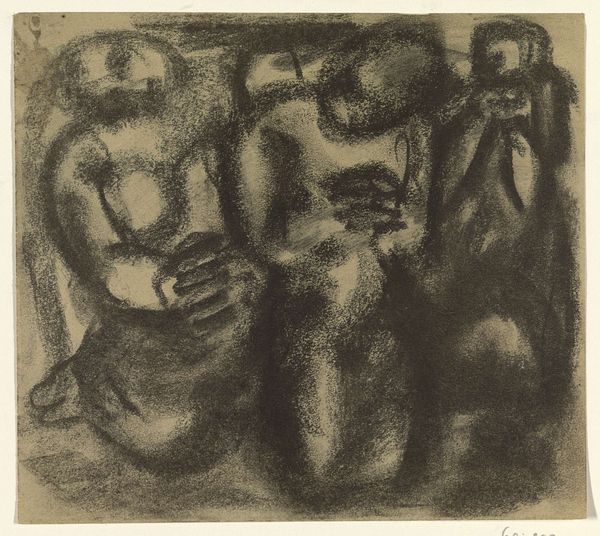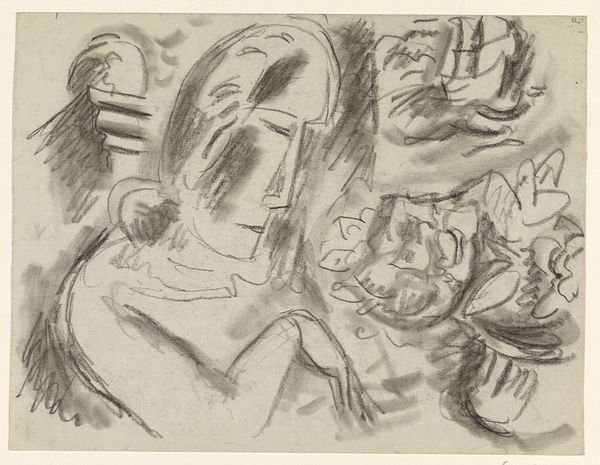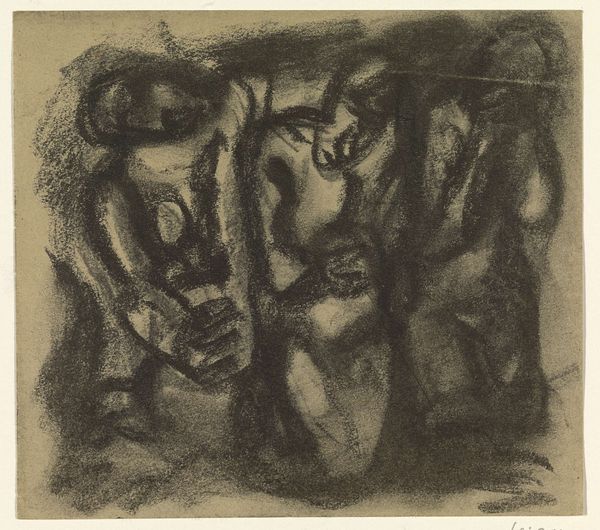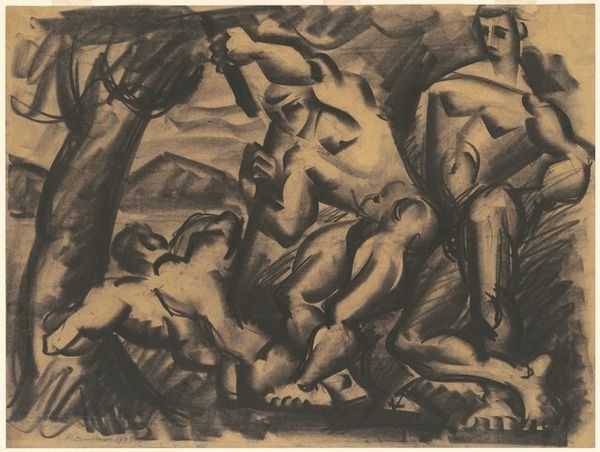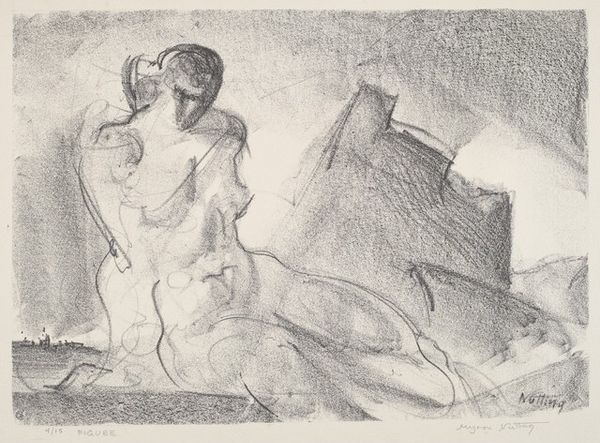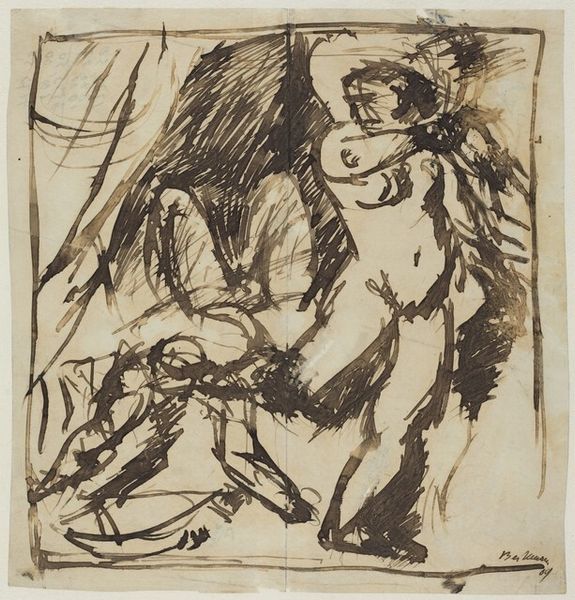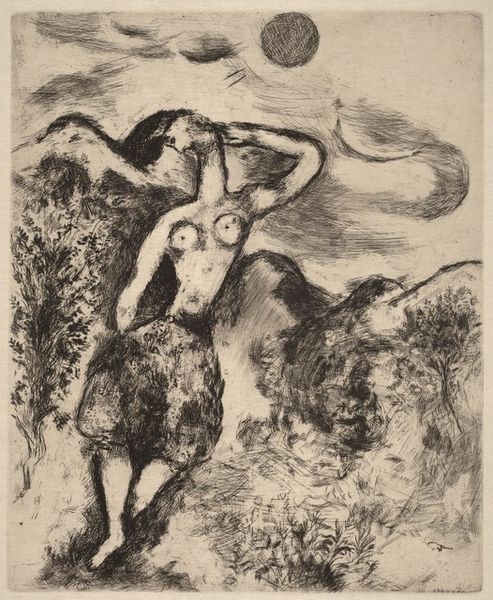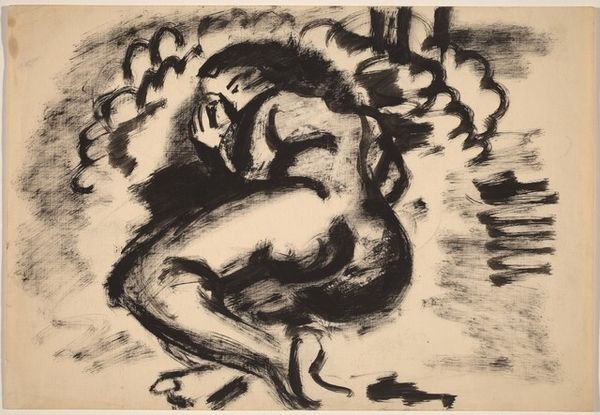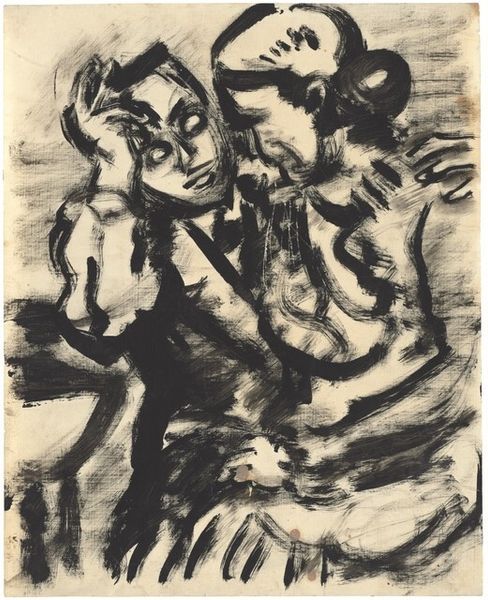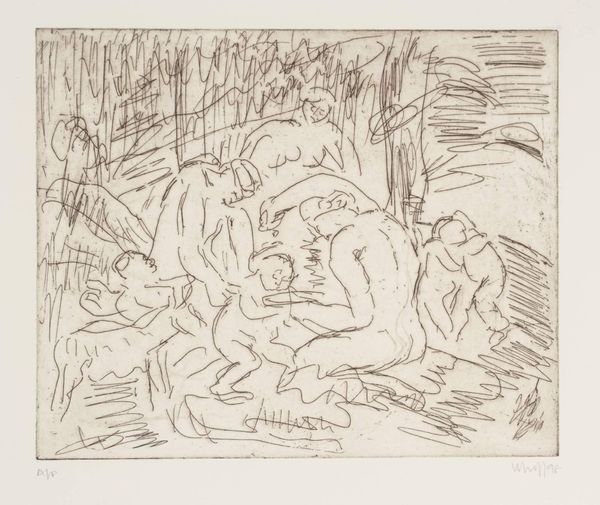
drawing, charcoal
#
drawing
#
charcoal drawing
#
figuration
#
charcoal art
#
limited contrast and shading
#
charcoal
#
nude
Dimensions: height 175 mm, width 201 mm
Copyright: Rijks Museum: Open Domain
Curator: This drawing by Leo Gestel, titled "Zittend vrouwelijk naakt in een landschap"—Seated Nude in a Landscape—likely dates sometime between 1891 and 1941. The piece utilizes charcoal on paper. Editor: The tonality is quite somber, wouldn't you agree? It's as though the figure is emerging from shadows, almost melancholic. There is also something gestural and urgent about the marks he’s made here. Curator: Charcoal lends itself to immediacy and those very visible strokes. Look at the density of the charcoal around her, which then defines the lighter tonal values used for her skin, almost radiating outwards. These recurring methods can certainly establish artistic continuity throughout historical memory. Editor: Recurring and potentially problematic, particularly with the nude form. Consider the historical context: a female figure, vulnerable, seated almost submissively in nature. Who is she and who gets to see her? Where is her agency? Curator: I see her less as passive and more as an archetype of the Earth Mother, connected to the natural world around her. Gestel’s limited shading suggests a timeless, universal representation rather than a portrait of a specific person within a certain time. Editor: Perhaps. But the vagueness of form can also be interpreted as erasure, diminishing individuality, fitting into a trope. The power dynamics in artistic representation are rarely neutral; what stories are we perpetuating? Curator: Art certainly invites many readings, influenced by individual perspectives, personal experiences, and beliefs. My focus is always how forms are interpreted in various cultures across time. Editor: Which only proves how vital it is for us to stay engaged, questioning the inherited assumptions we receive about representation, power, and even beauty in our cultural narrative. There is a constant responsibility to look critically at what we inherit. Curator: It’s true—every work invites continued reflection. Examining visual culture through a variety of lenses will deepen the relationship one builds with works like this, and the world.
Comments
No comments
Be the first to comment and join the conversation on the ultimate creative platform.
